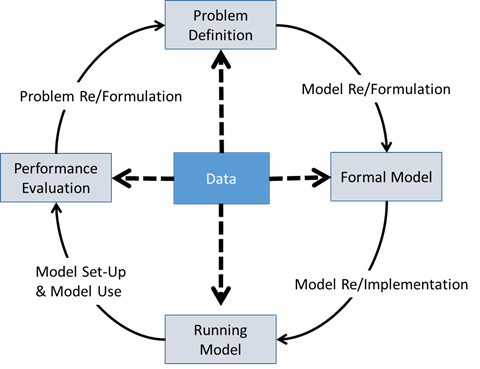Giving Beekeeping Guidance by cOmputatiOnal-assisted Decision making
The Formal Model: improving the transparency and functionality of the documentation process
Complex model documentation has long been a challenge since currently used methods involve reviewers too late in the process, often not allowing them to flag issues or suggest redesigns before the analysis is finished. The Formal Model, introduced recently in the open access journal Food and Ecological Systems Modelling Journal (FESMJ), aims to improve transparency and provide a formal approach to documentation. Reviewers can help improve the model by identifying problems early. The Formal model contains the details needed to allow for reproducibility. Additionally, it encourages modellers to think about the consequences of what is and is not included within the model. And finally, it gives the credit that modellers deserve for the involved process of creating a model.
FESMJ is an open-access, peer-reviewed scholarly journal, welcoming early and brief research research outcomes, such as data, models, model validation studies, software, data analytics pipelines and visualisation methods.The authors of the Formal Model article format recently published in FESMJ – among whom B-GOOD members from Aarhus University, propose splitting the model documentation, before analysis, into three steps: the Formal Model, Implementation Documentation, and Evaluation and Testing.

Photo: The modeling cycle
The first step, the Formal Model, as a peer-reviewed paper format, lays out the intentions for the model and includes reviewed literature that identifies the components of the model. Additionally, it lays out the theoretical framework, modelling approaches and externalities, outlines the plans to implement each process, with equations, descriptions, state variables and scales. Finally, the Formal Model gives the model’s strengths, weaknesses, exclusions, and place in the literature. Furthermore, to aid in establishing a new common format, the authors provide a flexible template for the Formal Model.
One of B-GOOD’s main objectives is the development of dynamic landscape models that capture the most important flower resources and the integration of these models into the ApisRAM model - a mechanistic, agent-based honey bee colony model for risk assessment with the goal of developing a digital twin of a colony. The ApisRAM model will provide a key resource for assessing impacts of stressors on health status, crucial for sustainable beekeeping, and will certainly make use of the Formal Model and all it has to offer.
Read the full paper "The Formal Model article format: justifying modelling intent and a critical review of data foundations through publication" here.